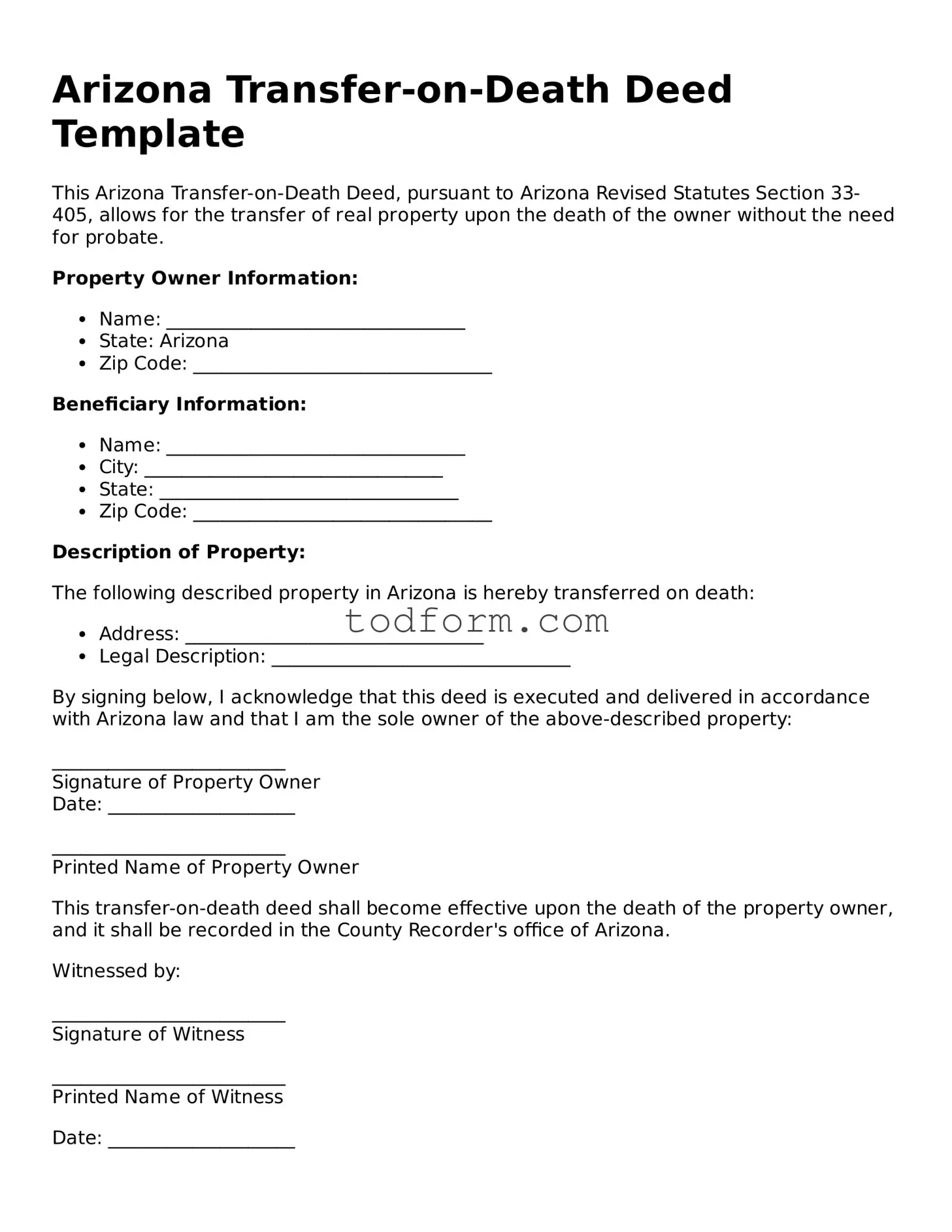The Arizona Transfer-on-Death Deed (TOD) is similar to a Living Trust in that both documents facilitate the transfer of assets upon the death of the property owner. A Living Trust allows individuals to place their assets into a trust during their lifetime, which can then be distributed to beneficiaries without going through probate. Like the TOD, a Living Trust provides a mechanism to bypass the lengthy and often costly probate process, ensuring that the assets are transferred directly to the intended beneficiaries in a more streamlined manner.
Another document akin to the Transfer-on-Death Deed is the Last Will and Testament. A will specifies how an individual's assets will be distributed after death. However, unlike the TOD, a will must go through probate, which can delay the distribution of assets and incur additional costs. The TOD offers a more efficient alternative by allowing property to pass directly to beneficiaries without the need for probate, thereby expediting the transfer process.
The Beneficiary Designation form is also comparable to the TOD. This document allows individuals to designate beneficiaries for certain accounts, such as life insurance policies or retirement accounts. Upon the account holder's death, the designated beneficiaries receive the assets directly. Similar to the TOD, this method bypasses probate, ensuring a quick and direct transfer of assets to the beneficiaries named in the form.
A Joint Tenancy agreement shares similarities with the Transfer-on-Death Deed in that both methods facilitate the transfer of property upon death. In a Joint Tenancy arrangement, two or more individuals hold title to a property together, and upon the death of one owner, the surviving owner automatically takes full ownership. While the TOD allows for a single owner to designate a beneficiary, the Joint Tenancy structure inherently includes survivorship rights that simplify the transfer of property without the need for probate.
The Community Property with Right of Survivorship agreement is another document that parallels the Transfer-on-Death Deed. In community property states like Arizona, spouses can hold property as community property with rights of survivorship. When one spouse passes away, the surviving spouse automatically inherits the deceased spouse's share of the property. This arrangement, like the TOD, avoids the probate process, ensuring a seamless transition of ownership to the surviving spouse.
Lastly, a Payable-on-Death (POD) account is similar to the Transfer-on-Death Deed in that it allows for the direct transfer of assets upon the account holder's death. A POD account is typically a bank account where the account holder designates a beneficiary to receive the funds upon their death. This designation ensures that the funds are transferred directly to the beneficiary, bypassing probate, much like the TOD facilitates the transfer of real property to designated beneficiaries without legal complications.
